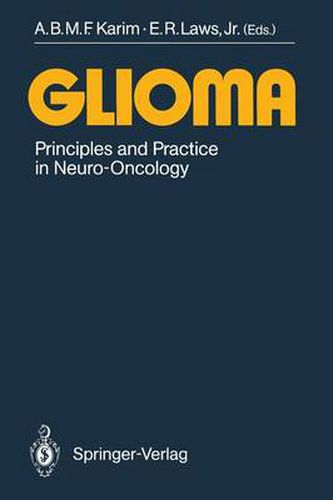Readings Newsletter
Become a Readings Member to make your shopping experience even easier.
Sign in or sign up for free!
You’re not far away from qualifying for FREE standard shipping within Australia
You’ve qualified for FREE standard shipping within Australia
The cart is loading…






This title is printed to order. This book may have been self-published. If so, we cannot guarantee the quality of the content. In the main most books will have gone through the editing process however some may not. We therefore suggest that you be aware of this before ordering this book. If in doubt check either the author or publisher’s details as we are unable to accept any returns unless they are faulty. Please contact us if you have any questions.
Many recent developments in neuro-oncology relevant to clinical practice have contributed to improved patient care. The most im portant impact of these developments on treatment may have been a change in the attitudes of the neuro-oncologists involved in making decisions regarding patients with gliomas. From an era of uncertainty which led to therapeutic nihilism, we have entered one of active interventions based on objective parameters for the treat ment of gliomas, which may be either slow-growing or rapid kil lers. The histopathological characteristics of gliomatous lesions are intriguing, and it is only recently that a clearer picture has begun to emerge. A group of dedicated neuropathologists has been at tempting to reach a consensus on pathological classification and grading, providing an important landmark in the field of neuro oncology. This book does not mean to provide exhaustive details on the histopathology of gliomas, but rather highlights the main problems in an authoritative chapter. This chapter attempts to guide the reader to a better understanding of all aspects of the neuropathology of glioma. Neuroradiology has recently seen several breakthroughs. Im ages unimaginable a decade ago are now providing us with an al most three-dimensional impression. But the concomitant illusions and artifacts must also be kept in mind, and pragmatic ideas are carefully put forward in this book about the developing body of knowledge concerning the newer imaging techniques.
$9.00 standard shipping within Australia
FREE standard shipping within Australia for orders over $100.00
Express & International shipping calculated at checkout
Stock availability can be subject to change without notice. We recommend calling the shop or contacting our online team to check availability of low stock items. Please see our Shopping Online page for more details.
This title is printed to order. This book may have been self-published. If so, we cannot guarantee the quality of the content. In the main most books will have gone through the editing process however some may not. We therefore suggest that you be aware of this before ordering this book. If in doubt check either the author or publisher’s details as we are unable to accept any returns unless they are faulty. Please contact us if you have any questions.
Many recent developments in neuro-oncology relevant to clinical practice have contributed to improved patient care. The most im portant impact of these developments on treatment may have been a change in the attitudes of the neuro-oncologists involved in making decisions regarding patients with gliomas. From an era of uncertainty which led to therapeutic nihilism, we have entered one of active interventions based on objective parameters for the treat ment of gliomas, which may be either slow-growing or rapid kil lers. The histopathological characteristics of gliomatous lesions are intriguing, and it is only recently that a clearer picture has begun to emerge. A group of dedicated neuropathologists has been at tempting to reach a consensus on pathological classification and grading, providing an important landmark in the field of neuro oncology. This book does not mean to provide exhaustive details on the histopathology of gliomas, but rather highlights the main problems in an authoritative chapter. This chapter attempts to guide the reader to a better understanding of all aspects of the neuropathology of glioma. Neuroradiology has recently seen several breakthroughs. Im ages unimaginable a decade ago are now providing us with an al most three-dimensional impression. But the concomitant illusions and artifacts must also be kept in mind, and pragmatic ideas are carefully put forward in this book about the developing body of knowledge concerning the newer imaging techniques.